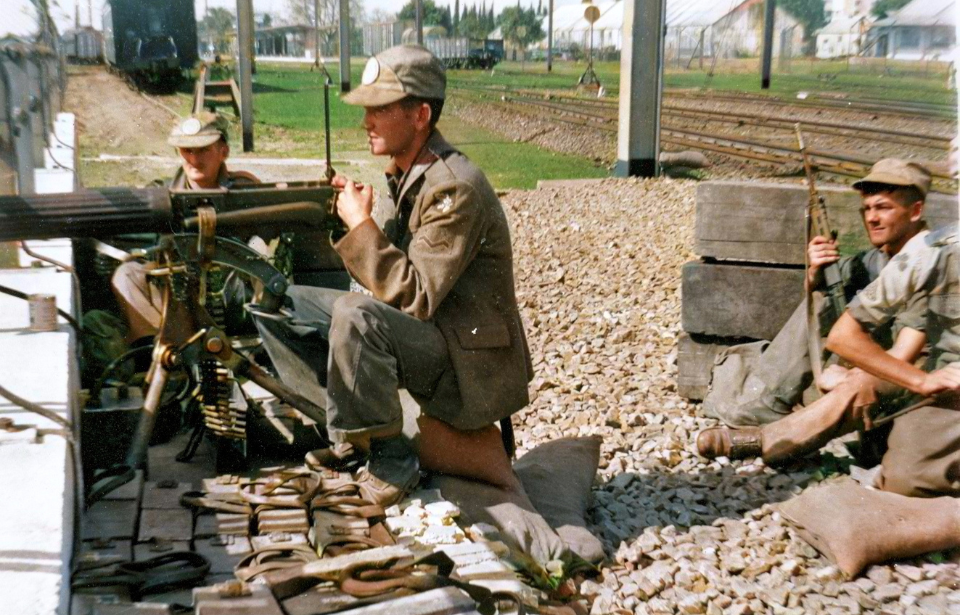The Siege of Jadotville, which was first released in 2016, is based on the true story of the 1961 siege of a 150-strong Irish UN battalion in the Congo.
An Irish war film, rooted in a startling true story, has been praised as an “underrated gem” and is now streaming on Netflix.
The Siege of Jadotville, which debuted in 2016, takes its inspiration from a pivotal battle during the Congo Crisis of the 1960s. The five-day siege began on 13 September 1961, taking place amid a seven-day period of escalating conflict between Katangese and ONUC (United Nations Operation in the Congo) forces during Operation Morthor.
Belfast-born actor Jamie Dornan stars as Patrick Quinlan in the war film, alongside Emmanuelle Seigner, Mark Strong, Mikael Persbrandt and Michael McElhatton. The synopsis for The Siege of Jadotville reads: “An Irish commander and his battalion of 150 men withstand a siege by 3,000 Congolese troops led by French and Belgian mercenaries working for mining corporations.”

In the sweltering heat of the Congo Crisis, where Cold War proxy wars and colonial legacies collided in a maelstrom of violence and intrigue, a small band of Irish United Nations peacekeepers etched their names into the annals of military valor with a five-day defense that defied all odds, a tale of grit and ingenuity so extraordinary it inspired the 2016 Netflix film The Siege of Jadotville, starring Jamie Dornan as the unflappable Commandant Patrick Quinlan. Directed by Johnny Brennan and scripted by Kevin Brophy, the movie captures the essence of the September 1961 battle, where Quinlan’s 155-man contingent from Ireland’s 35th Infantry Battalion faced down a 3,000-strong Katangese force backed by French and Belgian mercenaries, their stand not just a fight for survival but a poignant symbol of peacekeeping’s precarious nobility in a conflict that claimed thousands of lives amid the Congo’s turbulent path to independence.
The Congo Crisis, erupting in 1960 after Belgium’s hasty withdrawal from its colony, was a powder keg of tribal rivalries, foreign meddling, and resource wars, with the mineral-rich Katanga province—home to Jadotville—declaring independence under Moïse Tshombe, backed by Western mining interests like Union Minière du Haut-Katanga, whose copper and cobalt veins fueled European fortunes. Into this tinderbox stepped the United Nations Operation in the Congo (ONUC), a 20,000-strong force tasked with restoring order, but by September 13, 1961, Operation Morthor—a UN push to secure Jadotville and other outposts—unleashed hell. Quinlan’s Company C, airlifted with light arms and no heavy artillery, was outnumbered 20 to 1, facing mercenaries hardened by Algerian wars and Katangese gendarmes equipped with bazookas, mortars, and armored cars. What began as a defensive perimeter devolved into a siege, with the Irish hunkered in a makeshift fort of sandbags and vehicles, repelling waves of assaults that pummeled them from three sides, their radio crackling with desperate pleas for air support that never arrived.
Dornan, the Belfast-born heartthrob of Fifty Shades fame, embodies Quinlan with a quiet intensity that belies the chaos, his portrayal capturing the commander’s cool-headed engineering—fashioning booby traps from ammo crates and ration tins, directing fire with mathematical precision to conserve scant ammunition, all while maintaining morale among men who dubbed their stand “the Battle of the Drinking Hole” for the nearby water source they defended. Seigner, as the enigmatic Madame DeCamp, adds layers of intrigue as a French expatriate caught in the crossfire, her nuanced performance hinting at the colonial ghosts haunting the conflict. Strong’s Colonel Jim Harper and Persbrandt’s René Faulques, the real-life mercenary leader, clash in scenes that humanize the enemy, while McElhatton’s Sergeant Major Bill Sweeney grounds the Irish camaraderie with gallows humor amid the gunfire.
Filmed in Morocco’s arid landscapes to mimic Congo’s savanna, The Siege of Jadotville honors the real Quinlan’s heroism—he surrendered only after exhausting supplies, ensuring no Irish deaths, a feat that earned him the Distinguished Service Medal. Yet, the film critiques UN bureaucracy, with Harper’s futile radio pleas underscoring how politics stranded the troops. “It’s not just a battle—it’s a betrayal,” Dornan told The Hollywood Reporter, blending action with the ache of abandonment.
Premiering to 85% Rotten Tomatoes acclaim, the movie revives a forgotten chapter, where 155 Irishmen held off 3,000 for five days, losing no lives but gaining a legend. As Quinlan’s final line echoes—”We held the line”—The Siege of Jadotville isn’t mere entertainment; it’s an elegy for underdogs, a reminder that valor thrives in the shadows of history’s larger wars. In a world forgetting its foot soldiers, this siege endures—a clarion call from the Congo dust: courage isn’t counted in victories, but in the stands you make when the odds are eternal.




